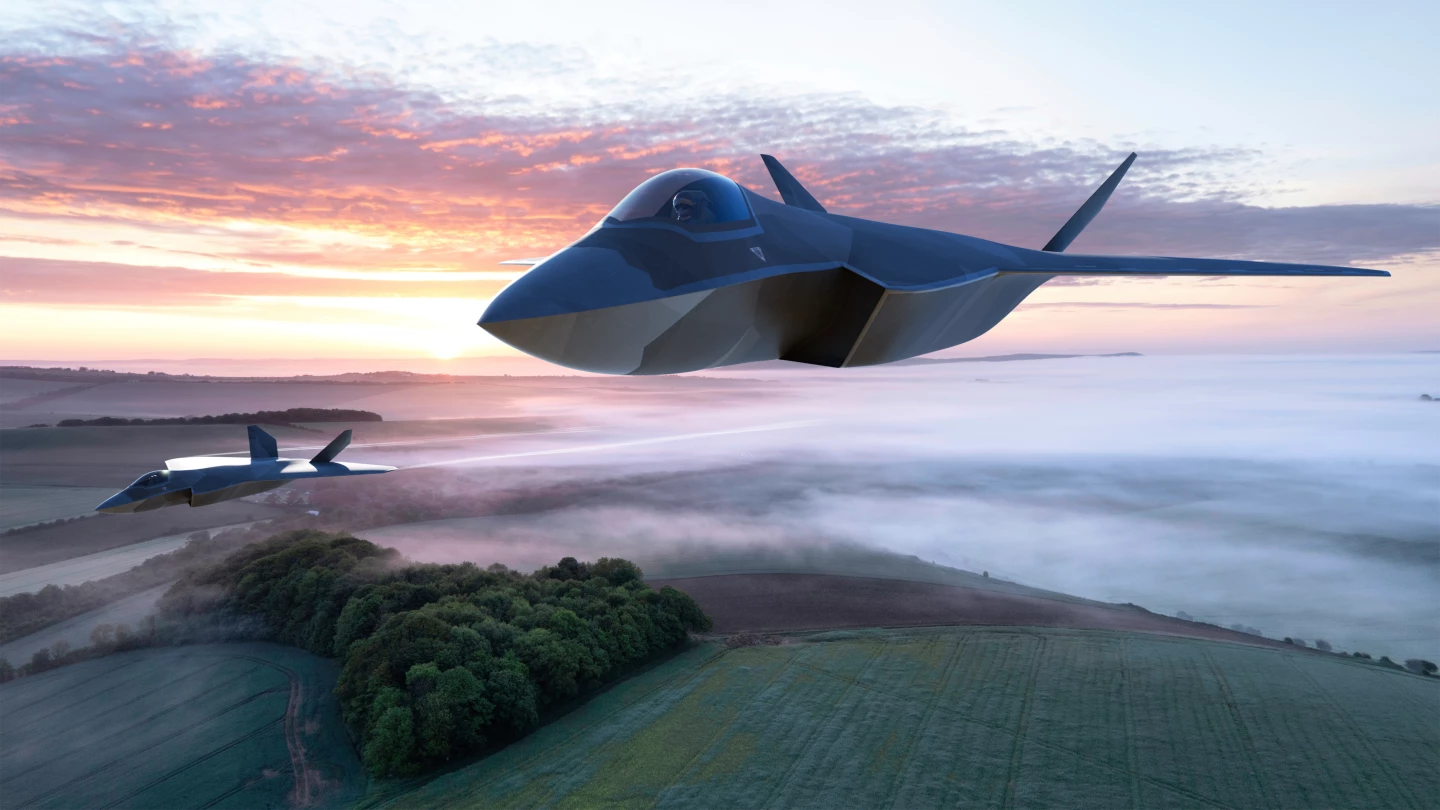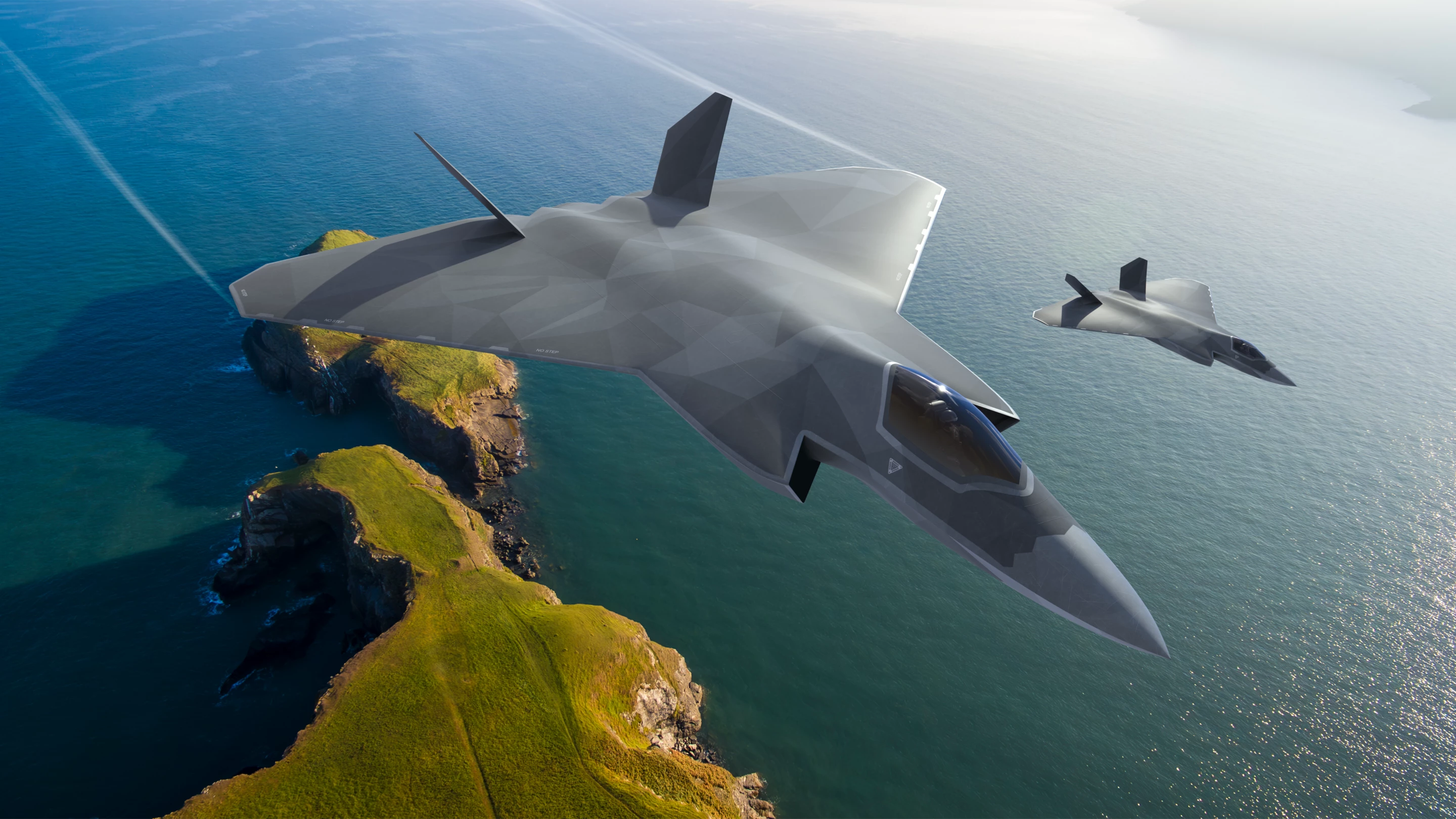At this year's Farnborough International Airshow, Britain, Italy and Japan are showing off the latest concept model of the sixth-generation fighter being developed by the Global Combat Air Programme (GCAP), highlighting its advanced aerodynamics.
Officially known as the Tempest in the UK, the new fighter is a joint effort by Britain, Italy and Japan that was born in December 2023 when the three countries agreed to team up, combining the British-led BAE Systems Tempest being developed with the help of Italy, with the Japanese Mitsubishi F-X fighter project.
The new concept to be unveiled at Farnborough shows off the greatly improved aerodynamics of the fuselage, with the most obvious improvement being the enlarged modified delta wing for greater control and mission flexibility. The air intakes are angled for better stealth and a raised section that can be seen forward of the v-shaped tail holds the S-shaped ducting for the engine air inlets that reduces the forward radar signature.

There are also suggestions of improved exhausts for a lower heat signature and a smaller aft radar signature. The jet engine being built by Rolls-Royce has a 10-times higher electrical power output than those in current combat aircraft and can power directed energy weapons, including lasers. In addition, the engine has an integrated electrical starter generator that is embedded in the engine core to save space while providing more electrical power. This also eliminates the gearbox required in the conventional configuration where the generator is installed outside the engine.
The Tempest is being developed jointly by primary contractors BAE Systems Military Air & Information, Mitsubishi Heavy Industries and Leonardo S.p.A, and boasts many highly advanced features. There is an augmented reality cockpit with very few actual physical controls or readouts. Instead, virtual instruments and controls are projected onto surfaces by the pilot's visor. Also, the plane will rely heavily on artificial intelligence that learns from its pilot. This not only means it's pilot-optional, but the advanced computer system can network with other platforms and take over many duties, allowing the pilot to act as mission commander.
It also doesn't hurt that the radar supplied by Leonardo is a powerful next-generation system capable of providing 10,000 times more data than current systems.

Following the recent change of government in the UK, there are currently doubts the project will proceed, with no commitments being made on future spending for the project. The Tempest was expected to fly in 2027 and to enter service with the Royal Air Force, Japan Air Self-Defense Force, and the Italian Air Force by 2035. However, the appearance at Farnborough strongly suggests that the partners have an eye on the export market.
"In the 18 months since the launch of the Global Combat Air Programme, we’ve been working closely with our industrial partners in Italy and Japan under the collaboration agreement, and also with the three governments, to understand and align requirements for a next generation combat aircraft," said Herman Claesen, Managing Director, Future Combat Air Systems, BAE Systems. "The new model, unveiled at Farnborough International Airshow, shows notable progress in the design and concepting of this future fighter jet. We’ll continue to test and evolve the design, as we move closer towards the next phase of the program."
Source: BAE Systems












